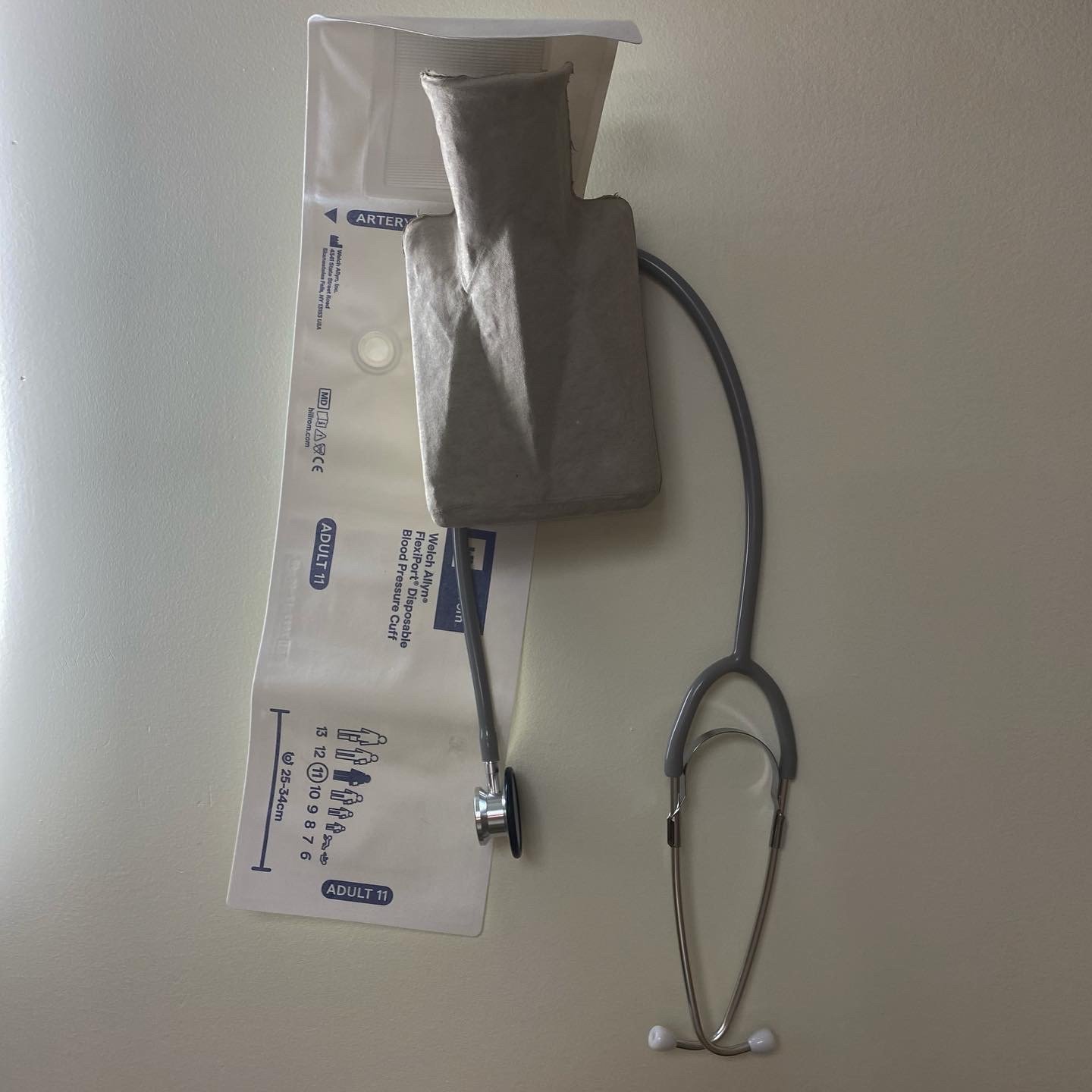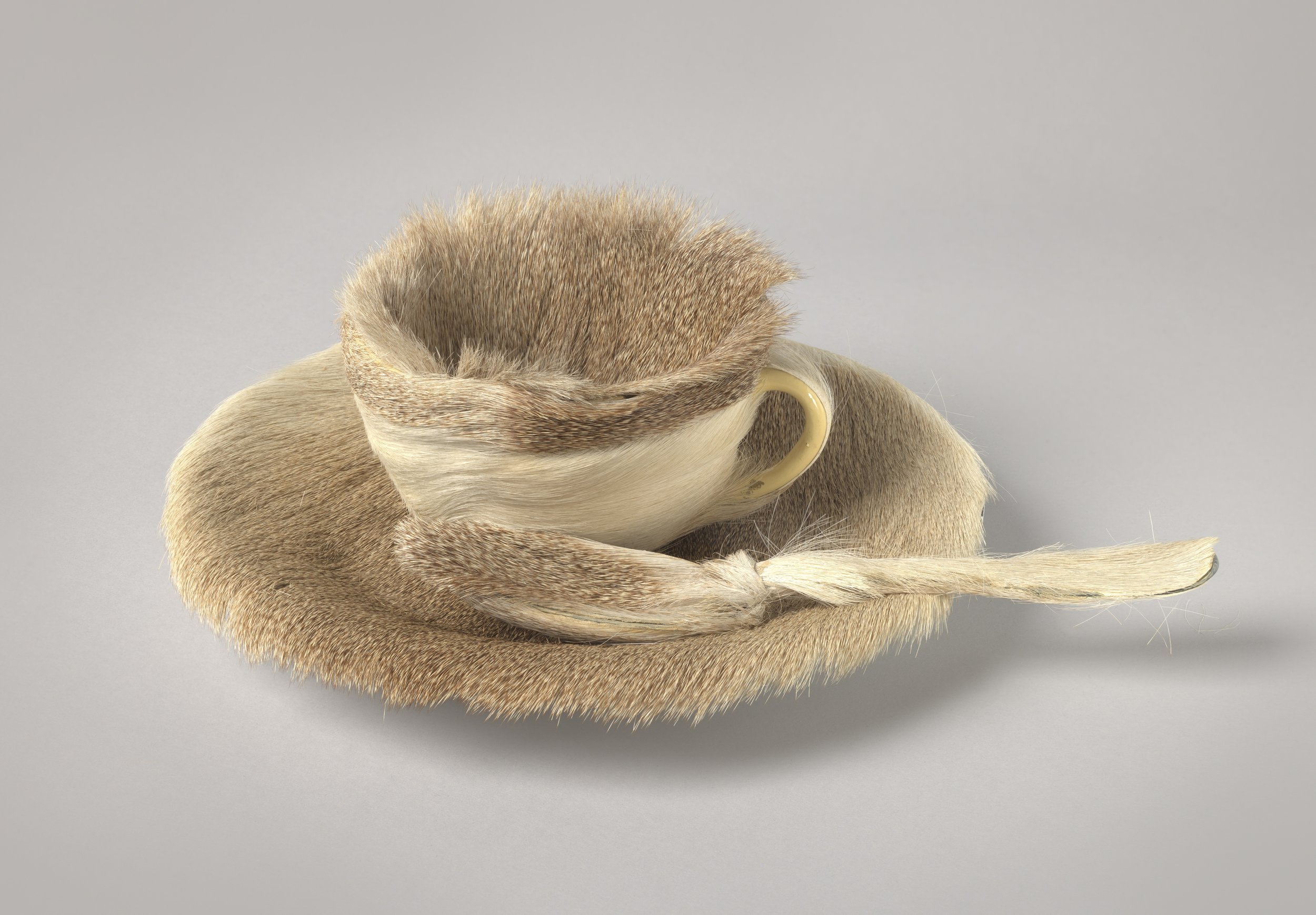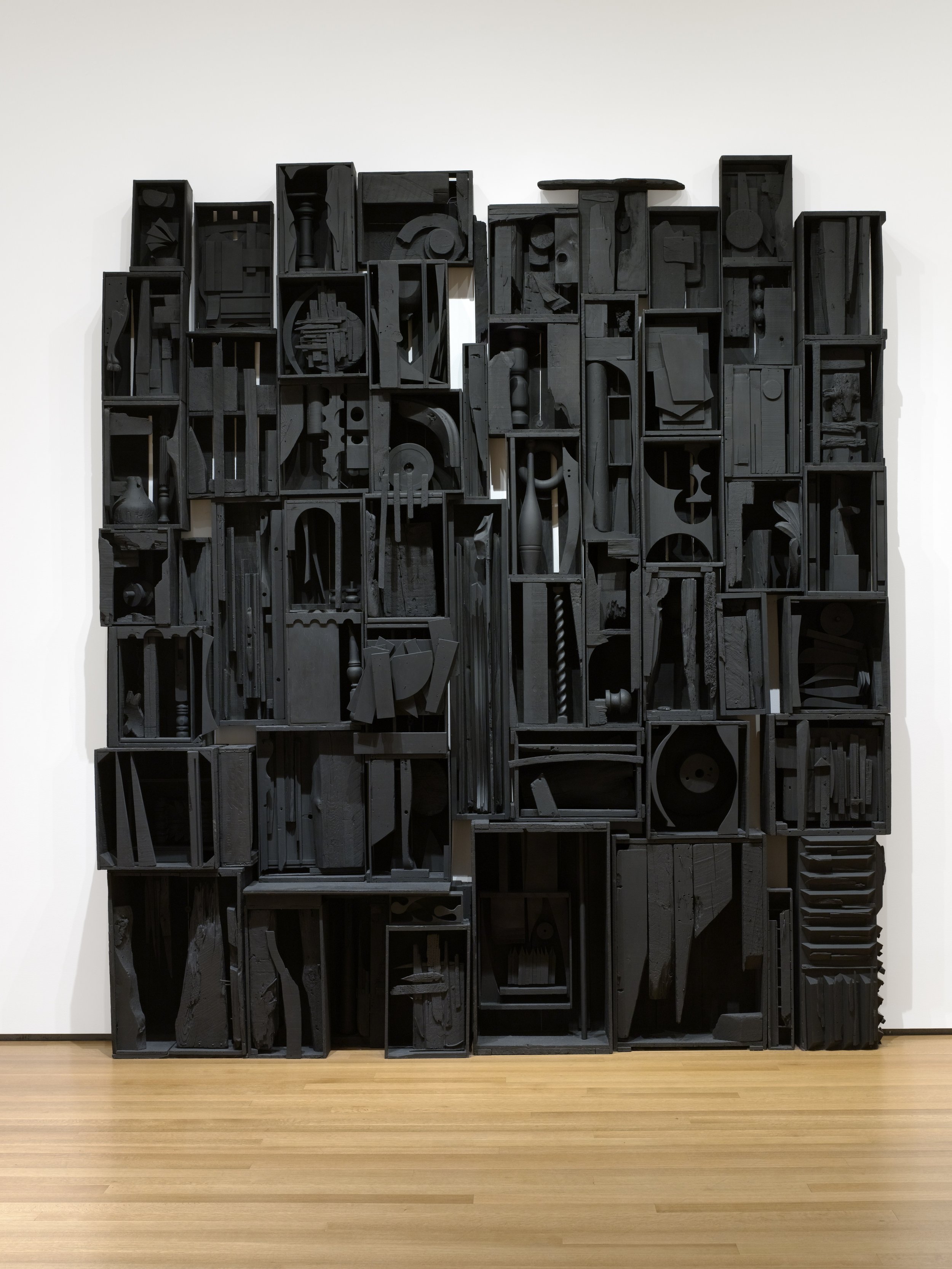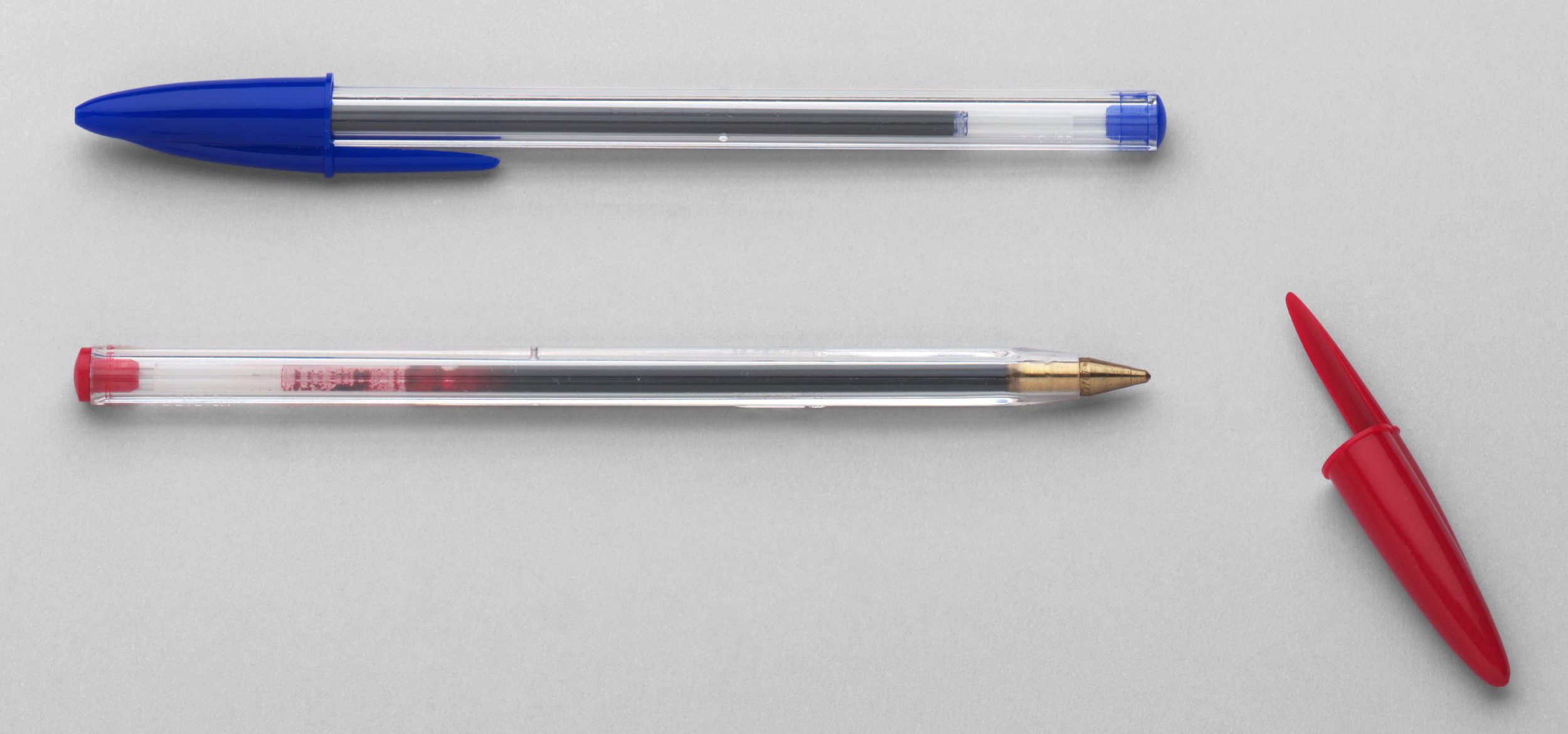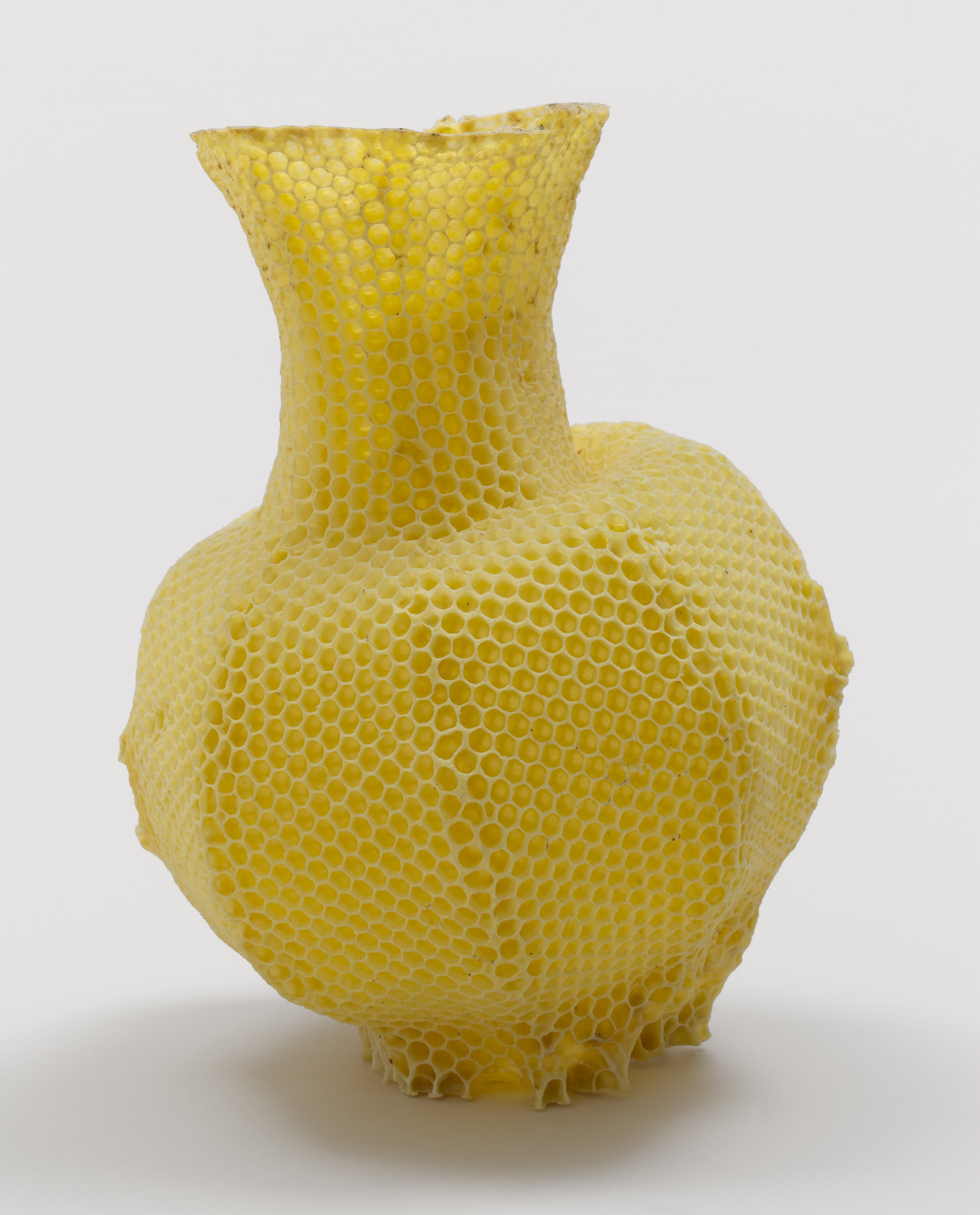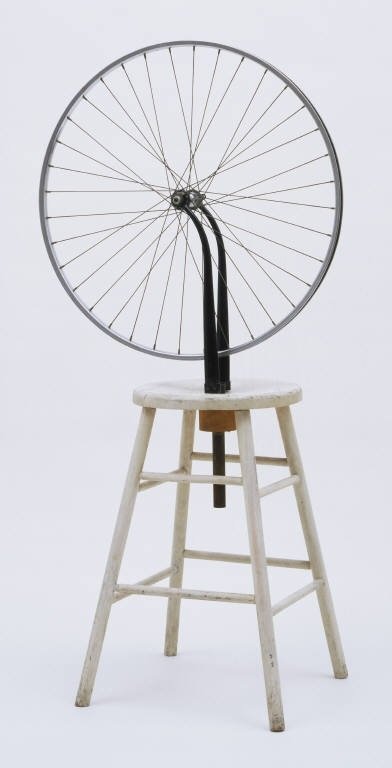Part 1 - Overview
Discover how artists use everyday objects to challenge assumptions about what constitutes art and how it should be made. Explore a variety of artistic and design choices, and the creative acts of inventing and transforming everyday objects.
Many artists use everyday objects—like beds, bicycle wheels, and teacups—to challenge assumptions about what constitutes art and how it should be made. Designers develop useful objects considering form, function, and, often, beauty. This theme will introduce you to ideas about artistic and design choices, and the creative acts of inventing and transforming everyday objects. The introduction video is the place to begin. It focuses on three works of art—Marcel Duchamp’s first “readymade”; a confounding and controversial fur-covered teacup by Meret Oppenheim; and Robert Rauschenberg’s paint-covered bed—through which you will explore this theme. The slideshow expands upon these artworks and features many more works of art and design, ranging from El Anatsui’s sumptuous, tapestry-like wall sculptures made entirely of liquor bottle caps and seals to a 3-D printed dress designed by Jessica Rosenkrantz and Jesse Louis-Rosenberg.
Learning Objectives
Discover how artists use everyday objects to challenge assumptions about what constitutes art and how it should be made.
Analyze a variety of artistic and design choices, and the creative acts of inventing and transforming everyday objects.
Propose your own readymades from objects in your environment.
3.2. Transforming Everyday Objects
“As an artist, I think that I should work with processes and media that are immediately around me.” —El Anatsui
Select three objects from your surrounding environment to combine and designate as a readymade. Brainstorm a title for your readymade. Does the title reflect the way these everyday objects are used or how they change when combined with other objects? Either describe or take a photograph of your readymade and post it here with its title. Then, respond to another learner’s post that resonates with or interests you.
“Healthcare.”
February 9, 2021
I am in isolation at the Peace Arch Hospital after having a stroke on January 31, 2023 and somehow contracting chickenpox. There isn’t much in the room I’m in, although there is a small screw in the wall on which a clock or bulletin board was likely hung at one time. This lonely screw became the hook upon which I hung up to three found objects to create what Robert Rauschenberg termed a readymade combine.
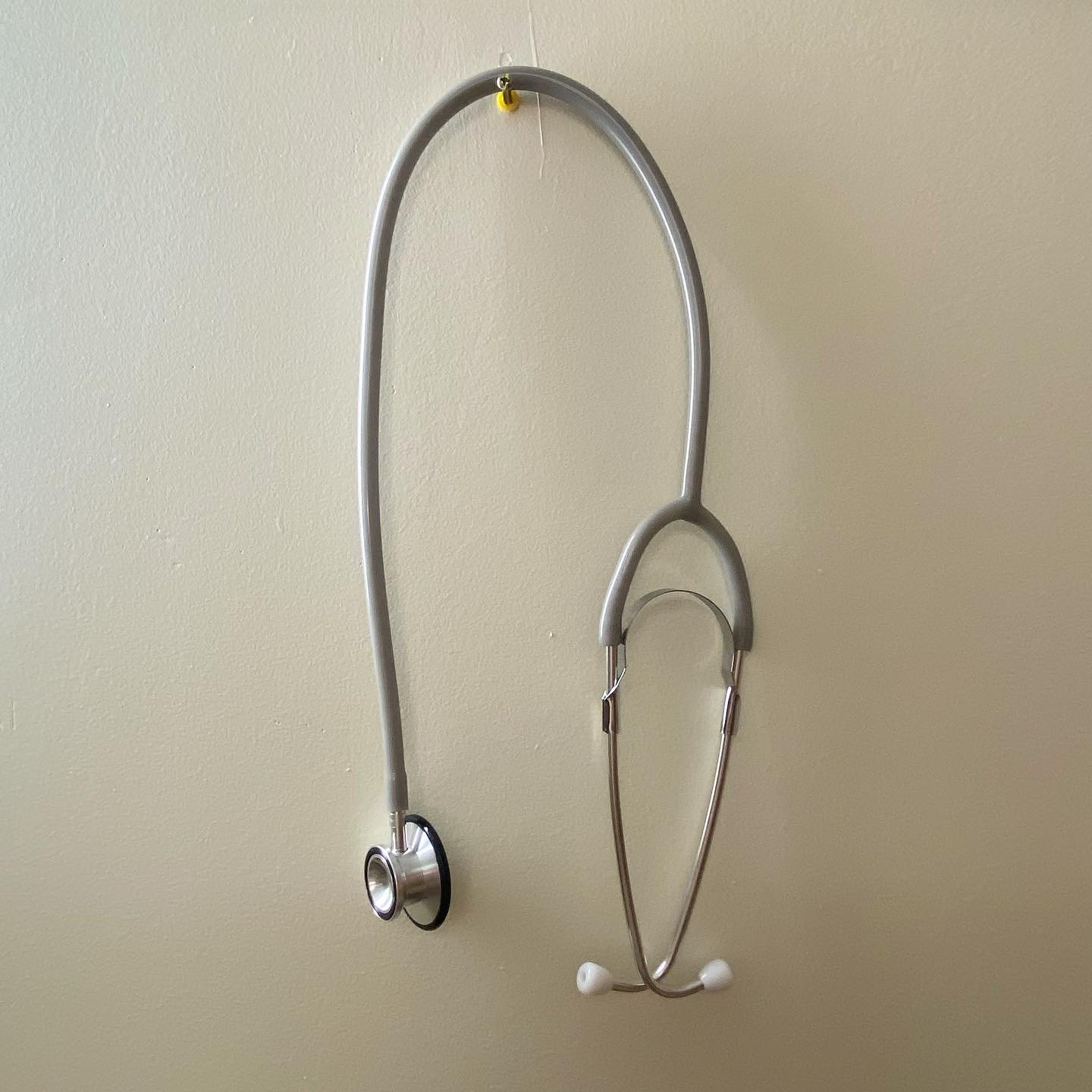
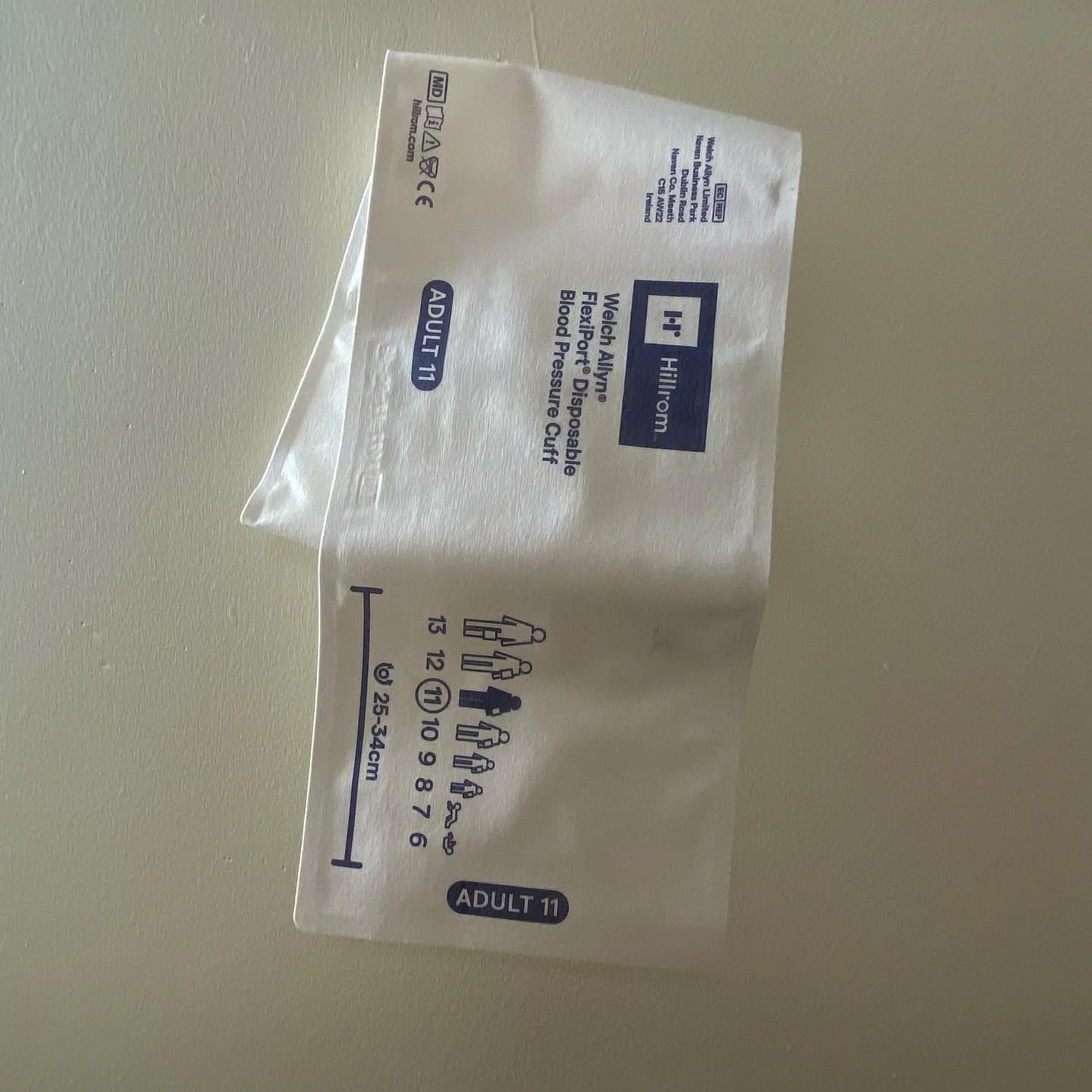
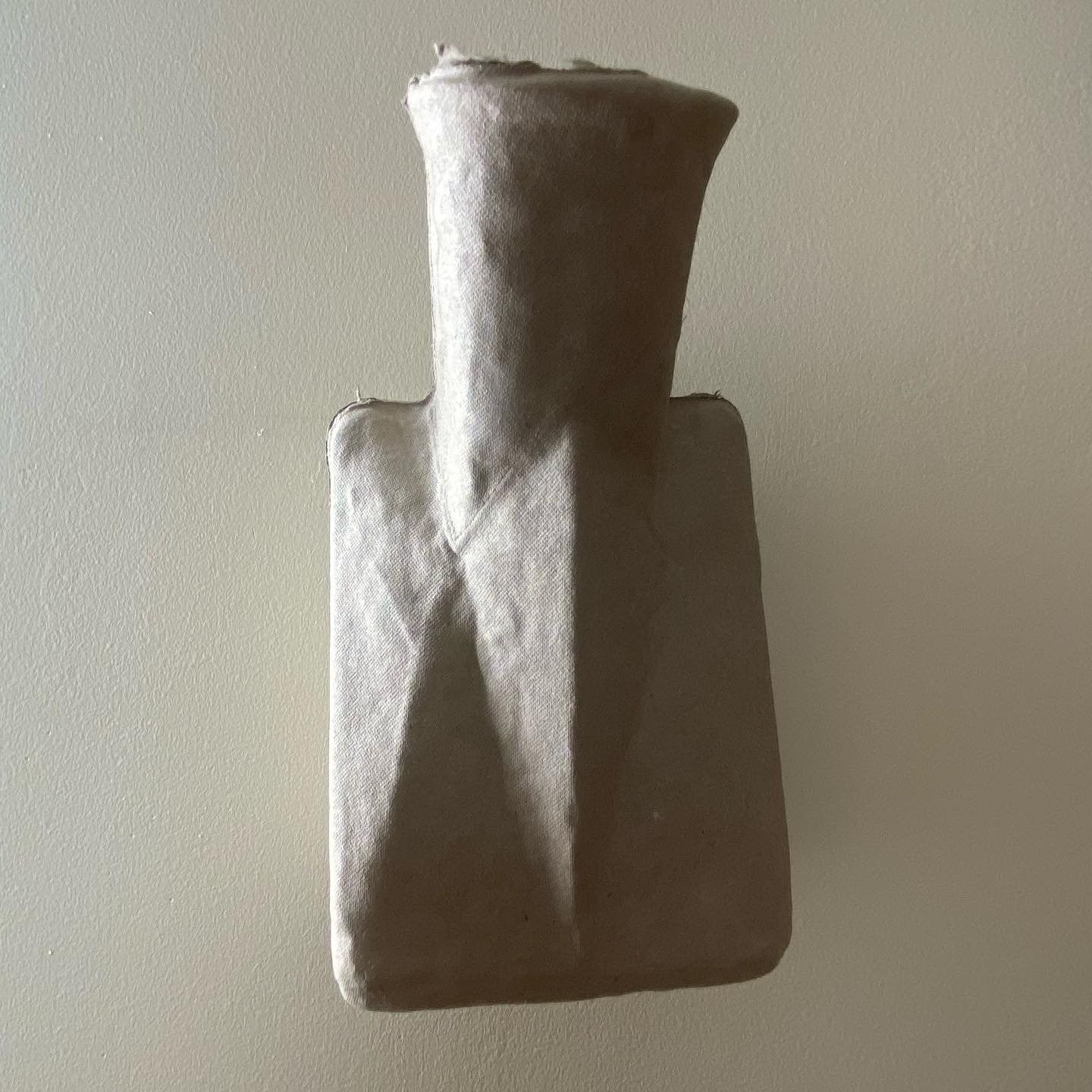
After you’ve gone through this process, describe how would you introduce this theme to your students. What question could you ask or what activity could you develop to give them an entry point into the theme?
It would be interesting to discuss the functionality of things we encounter on a daily basis. In what ways could students envision new uses for these items? How does placing an object on a museum wall change the item’s purpose and appearance? If time permitted, students could also modify an object by painting and drawing on it, disassembling it and using the parts in a new artwork, or using it in a mixed media work.
3.4. Weekly Reflection
December 24, 2020
Reflect on what you learned this week.
I love how artists like Marcel Duchamp used found objects and placed them in a gallery setting to question and challenge what had traditionally been viewed as art. This was an important turning point in the world of art as it began to challenge the ideas and concepts that lay behind art up to that point. No longer was the carved marble or bronze cast figure the end result in sculpture... now, the chisel used to create those sculptures could also stand as an artwork in its own right.
What did you learn that was new or surprising?
I was amazed at how many different artists contributed to the development of the idea of transforming everyday objects. Both male and female artists brought unique perspectives to the objects. Some objects were simply presented as is, such as Duchamp’s FOUNTAIN. Others were altered slightly, such as Duchamp’s BICYCLE WHEEL, which is presented as is but attached to a stool. Doing this, took an object of mobility and froze it, as it was now stuck, upside down, unable to move forward as it might otherwise do as part of a unicycle or bicycle. Artists like Méret Oppenheim altered her found objects even more, as seen with LE DEJEUNER EN FOURRURE, where the objects were completely covered in fur, thereby completely altering the function of the objects.
Did any of the artworks resonate with you?
Learning about the thought process behind Rauschenberg’s work, BED, was fascinating. How he ended up using the quilt as an art surface simply because he had nothing else to paint on. And then, only when he wasn’t happy with how it was going, did he add the pillow. It highlights how he was able to work from an experimental and improvisational mindset which is so important to cultivate as an artist.
Did your perspective on any of the artworks change by looking at them through this week’s theme?
My perspectives on the artworks weren’t altered greatly as I am familiar with concepts like the readymade or more contemporary offshoots like works created under Arte Povera. My reverence for them deepened though and there were works presented that I wasn’t familiar with before such as Mike Keeley, as well as Rosencrantz & Rosenberg.
Review…
Teaching with the Transforming Everyday Objects theme:
Allows teachers to explore both works of art and design objects; and
Provides entry points for exploring artists’ and designer’ materials and techniques.
If you were to have a conversation about objects, some topics to discuss would include:
The function of the object;
How the object was made; and
Who the object was made for.
The following are examples of topics you can talk about with your students within the Transforming Everyday Objects theme:
Materials and techniques; and
Form vs function.
According to John Hennigar Shuh, the following statements are true about object based learning:
It helps students develop critical thinking skills; and
Since objects are not age-specific, object-based learning engages students at all levels.
John Hennigar Shu does not recommend that if you are new to object-based teaching, you should start with an object that your students are not familiar with.
After completing a successful line of fur-covered jewelry, Meret Oppenheim developed a line of fur-covered dinnerware for sale in local Parisian boutiques.
Robert Rauschenberg stated that he was operating in the gap between Art and Life by how:
He combines elements of painting and sculpture; and
His use of found objects as well as art materials.
Louise Nevelson did not use lumber from her local hardware store in her sculpture, Sky Cathedral.
Jessica Rosenkrantz and Jesse Louis-Rosenberg’s Kinematics Dress was not designed as a mass-produced item that anyone could wear.
Mike Kelley used hand-sewn, handmade objects intended to be given away in order to present a contrast to the look of brand new, mass-manufactured objects.
The first ballpoint pen was not invented by the French company, Bic.
Tom Wesselmann incorporated a framed reproduction of a Picasso painting, a refrigerator door, as well as clippings from advertisements into his mixed media painting, Still Life #30.
Tomas Gabzdil Libertíny did not use a prototyping machine to create his series of Honeycomb Vases.
In assessing useful objects to add to the museum’s collection, MOMA curators look at form, beauty, and function.
Betye Saar once said she considered windows to represent a means of travelling from one level of consciousness to another.
Marcel Duchamp’s Bicycle Wheel is designated an “assisted readymade” rather than simply a “readymade” because Duchamp not only chose the eponymous object but also altered it by mounting it upside down on a stool.
Meret Oppenheim. Object. 1936. Fur-covered cup, saucer, and spoon; cup 4 3/8" (10.9 cm) diam.; saucer 9 3/8" (23.7 cm) diam.; spoon 8" (20.2 cm) long, overall height 2 7/8" (7.3 cm).
Robert Rauschenberg. Bed. 1955. Oil and pencil on pillow, quilt, and sheet on wood supports, 6' 3 1/4" x 31 1/2" x 8" (191.1 x 80 x 20.3 cm).
Louise Nevelson. Sky Cathedral. 1958. Painted wood, 11' 3 1/2" x 10' 1/4" x 18" (343.9 x 305.4 x 45.7 cm).
Jessica Rosenkrantz, Jesse Louis-Rosenberg. Kinematics Dress. 2013. Laser-sintered nylon, 44 x 37 x 2" (111.8 x 94 x 5.1 cm) irreg.
Mike Kelley. Untitled. 1990. Found afghans and stuffed dolls, 6" x 20' 5" x 52" (15.2 x 622.3 x 132.1 cm).
Décolletage Plastique Design Team. Bic Cristal Ballpoint pen. 1950. Polystyrene, polypropylene, and tungsten carbide, 5 7/8 x 1/2" (14.9 x 1.3 cm).
Tom Wesselmann. Still Life #30. 1963. Oil, enamel, and synthetic polymer paint on composition board with collage of printed advertisements, plastic flowers, refrigerator door, plastic replicas of 7-Up bottles, glazed and framed color reproduction, and stamped metal, 48 1/2 x 66 x 4" (122 x 167.5 x 10 cm).
Tomáš Gabzdil Libertíny. The Honeycomb Vase “Made by Bees” (Prototype). 2006. Beeswax, 9 x 5 1/2 x 5 1/2" (22.9 x 14 x 14 cm).
Marcel Duchamp. Bicycle Wheel. 1951 (third version, after lost original of 1913). Metal wheel mounted on painted wood stool, 51 x 25 x 16 1/2" (129.5 x 63.5 x 41.9 cm).

